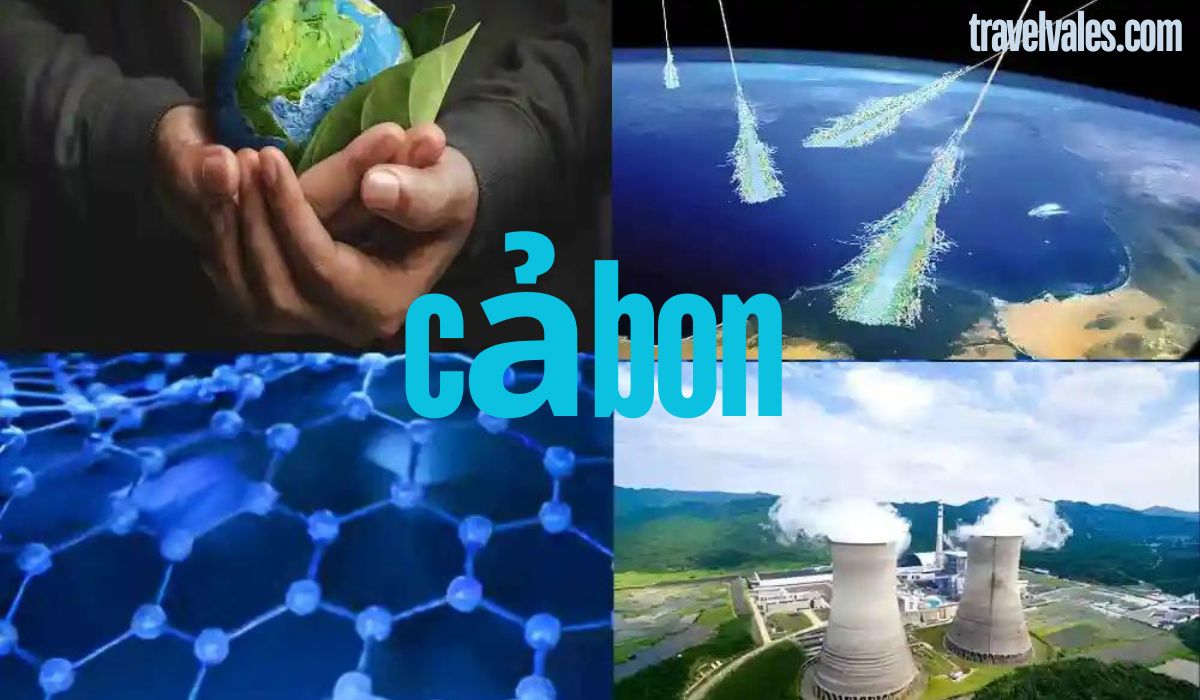Introduction to cảbon
cảbon is one of the most essential elements on Earth. It is the foundation of life, present in all living organisms. From the air we breathe to the food we eat, carbon is everywhere. This article delves deep into the fascinating world of carbon, exploring its various forms, significance, and impact on our environment and daily lives.
What is Carbon?
Carbon is a chemical element with the symbol ‘C’ and atomic number 6. It is nonmetallic and tetravalent, meaning it can form four bonds with other elements. This property makes carbon incredibly versatile and capable of forming complex molecules.
Key Characteristics of Carbon
- Symbol: C
- Atomic Number: 6
- Atomic Weight: 12.01
- State at Room Temperature: Solid
- Appearance: Can be found in different forms such as graphite (black) and diamond (transparent)
The Forms of Carbon
Carbon exists in several different forms, known as allotropes. Each allotrope has unique properties and uses.
Diamond
- Structure: Carbon atoms are arranged in a crystal lattice structure.
- Properties: Hardest natural material, excellent thermal conductor, transparent.
- Uses: Jewelry, cutting tools, industrial applications.
Graphite
- Structure: Carbon atoms are arranged in layers.
- Properties: Soft, slippery, excellent electrical conductor.
- Uses: Pencils, lubricants, batteries.
Amorphous Carbon
- Structure: Carbon atoms lack a crystalline structure.
- Properties: Vary depending on the form (e.g., soot, charcoal).
- Uses: Filters, pigments, fuel.
Fullerenes
- Structure: Carbon atoms form spherical, tubular, or ellipsoidal shapes.
- Properties: High electrical conductivity, strong, lightweight.
- Uses: Electronics, nanotechnology, materials science.
The Carbon Cycle
The carbon cycle is the process by which carbon moves through the Earth’s ecosystems. It is essential for maintaining the balance of carbon on our planet.
Steps in the Carbon Cycle
- Photosynthesis: Plants absorb carbon dioxide (CO2) from the atmosphere and convert it into glucose.
- Respiration: Animals and plants release CO2 back into the atmosphere through respiration.
- Decomposition: Dead organisms decompose, releasing carbon back into the soil and atmosphere.
- Ocean Uptake: Oceans absorb CO2 from the atmosphere.
- Fossil Fuels: Over millions of years, carbon in dead organisms can turn into fossil fuels (coal, oil, natural gas).
Importance of the Carbon Cycle
- Climate Regulation: Helps regulate Earth’s temperature.
- Life Support: Provides carbon necessary for life processes.
- Soil Fertility: Maintains nutrient balance in soils.
Carbon in Everyday Life
Carbon is a part of our daily lives in more ways than we might realize.
Food and Nutrition
- Carbohydrates: Sugars, starches, and fibers in our diet.
- Proteins: Essential for growth and repair of tissues.
- Fats: Provide energy and support cell growth.
Materials and Products
- Plastics: Made from carbon-based petrochemicals.
- Fuels: Gasoline, diesel, and natural gas.
- Textiles: Cotton, wool, and synthetic fibers.
Technology
- Electronics: Carbon-based materials in batteries and screens.
- Construction: Carbon fiber and other carbon composites.
- Medicine: Pharmaceuticals and medical devices.
Carbon and the Environment
Carbon plays a critical role in environmental issues, particularly climate change.
Greenhouse Effect
Carbon dioxide is a greenhouse gas, meaning it traps heat in the Earth’s atmosphere. This is essential for keeping our planet warm enough to support life but too much CO2 leads to global warming.
Carbon Footprint
Our carbon footprint is the total amount of greenhouse gases we produce through our activities. Reducing our carbon footprint can help mitigate climate change.
Carbon Sequestration
Carbon sequestration is the process of capturing and storing atmospheric CO2. This can be done through:
- Forests: Trees absorb CO2 during photosynthesis.
- Soil: Proper land management can increase carbon storage in soils.
- Technology: Direct air capture and carbon capture and storage (CCS).
The Impact of Carbon Emissions
Human activities, especially the burning of fossil fuels, have significantly increased atmospheric CO2 levels. This has led to several environmental issues:
Global Warming
Increased CO2 levels trap more heat, leading to a rise in global temperatures. This causes:
- Melting Ice Caps: Rising sea levels and loss of habitat.
- Extreme Weather: More frequent and severe storms, droughts, and heatwaves.
- Ecosystem Disruption: Changes in habitats and species distribution.
Ocean Acidification
Oceans absorb a large portion of CO2 emissions. This leads to the formation of carbonic acid, which lowers the pH of seawater, affecting marine life, especially organisms with calcium carbonate shells.
Health Impacts
Air pollution from carbon emissions can cause respiratory problems, cardiovascular diseases, and other health issues.
Strategies for Reducing Carbon Emissions
Addressing carbon emissions requires a multifaceted approach. Here are some effective strategies:
Renewable Energy
Shifting from fossil fuels to renewable energy sources like solar, wind, and hydroelectric power can significantly reduce carbon emissions.
Energy Efficiency
Improving energy efficiency in buildings, transportation, and industries can lower energy consumption and emissions.
Sustainable Transportation
Promoting public transportation, electric vehicles, and cycling can reduce the carbon footprint of transportation.
Reforestation
Planting trees and restoring forests can increase carbon sequestration and improve air quality.
Carbon Pricing
Implementing carbon pricing mechanisms like carbon taxes and cap-and-trade systems can incentivize businesses to reduce emissions.
Lifestyle Changes
Individuals can also make a difference by adopting sustainable practices:
- Reducing Meat Consumption: Livestock farming is a significant source of methane, another potent greenhouse gas.
- Minimizing Waste: Recycling and reducing waste can lower emissions.
- Conserving Energy: Using energy-efficient appliances and reducing energy consumption at home.
Carbon in Industry
Industries are major contributors to carbon emissions, but they also play a crucial role in developing solutions.
Carbon Capture and Storage (CCS)
CCS technology captures CO2 emissions from industrial processes and stores them underground to prevent them from entering the atmosphere.
Green Manufacturing
Industries are adopting greener manufacturing processes to reduce emissions and environmental impact.
Sustainable Supply Chains
Businesses are working towards more sustainable supply chains by sourcing materials responsibly and minimizing waste.
The Future of Carbon
Innovations and research are paving the way for a more sustainable future.
Carbon Nanotubes
Carbon nanotubes are tiny, cylindrical structures with remarkable strength and electrical properties. They have potential applications in electronics, medicine, and materials science.
Graphene
Graphene is a single layer of carbon atoms arranged in a hexagonal lattice. It is incredibly strong, lightweight, and conductive, with potential uses in various technologies.
Carbon Utilization
Scientists are exploring ways to convert CO2 into useful products like fuels, chemicals, and building materials.
YOU MAY ALSO LIKE: Discover the Thrill of Ocean Adventures in Punta Cana
Conclusion
Carbon is a fundamental element that plays a vital role in life, industry, and the environment. Understanding its various forms, the carbon cycle, and the impact of carbon emissions is essential for addressing global challenges like climate change. By adopting sustainable practices and technologies, we can reduce our carbon footprint and create a healthier, more sustainable future for generations to come.
By incorporating detailed information and optimizing for keywords related to carbon, this article aims to provide a comprehensive and user-friendly guide that can rank highly on search engines and educate readers effectively.
FAQS
1. What are the main uses of carbon?
Carbon has a wide range of uses in various fields due to its versatile nature. Here are some key applications:
- In Everyday Life: Carbon is present in all living organisms, forming the basis of carbohydrates, proteins, and fats in our food. It is also used in everyday items like pencils (graphite) and fuels (gasoline, natural gas).
- In Industry: Carbon is used in the production of steel (carbon is a key component of steel), plastics, and synthetic fibers. It is also crucial in the manufacture of electronics and batteries.
- In Technology: Advanced materials like carbon nanotubes and graphene, which are forms of carbon, are being used in cutting-edge technologies including electronics, medicine, and materials science.
2. How does carbon affect climate change?
Carbon, particularly in the form of carbon dioxide (CO2), plays a significant role in climate change:
- Greenhouse Gas: CO2 is a greenhouse gas, meaning it traps heat in the Earth’s atmosphere. This process is natural and necessary for life, but human activities have significantly increased CO2 levels, enhancing the greenhouse effect and leading to global warming.
- Climate Impacts: Elevated CO2 levels contribute to rising global temperatures, melting ice caps, rising sea levels, and more extreme weather patterns. These changes disrupt ecosystems and pose risks to human health and agriculture.
3. What is the carbon cycle and why is it important?
The carbon cycle is the natural process through which carbon is exchanged among the atmosphere, oceans, soil, and living organisms. Key steps include:
- Photosynthesis: Plants absorb CO2 from the atmosphere and convert it into glucose.
- Respiration: Animals and plants release CO2 back into the atmosphere.
- Decomposition: Dead organisms break down, returning carbon to the soil and atmosphere.
- Ocean Uptake: Oceans absorb a significant amount of atmospheric CO2.
The carbon cycle is crucial for maintaining the balance of carbon on Earth, supporting life, and regulating the climate.
4. What are carbon emissions and how can they be reduced?
Carbon emissions refer to the release of carbon, particularly in the form of CO2, into the atmosphere. Major sources include:
- Fossil Fuels: Burning coal, oil, and natural gas for energy and transportation.
- Deforestation: Cutting down trees reduces the amount of CO2 absorbed by forests.
To reduce carbon emissions, we can:
- Use Renewable Energy: Switch to solar, wind, and other renewable energy sources.
- Increase Energy Efficiency: Improve energy efficiency in homes, buildings, and transportation.
- Promote Reforestation: Plant trees and protect existing forests.
- Adopt Sustainable Practices: Reduce waste, recycle, and opt for sustainable transportation options like biking and public transport.
5. What is carbon sequestration and how does it help combat climate change?
Carbon sequestration is the process of capturing and storing atmospheric CO2 to mitigate climate change. There are several methods:
- Biological Sequestration: Planting trees and managing forests to absorb CO2 through photosynthesis.
- Geological Sequestration: Storing CO2 in underground rock formations.
- Technological Solutions: Developing technologies to capture CO2 emissions from industrial sources and store them safely.
Carbon sequestration helps reduce the amount of CO2 in the atmosphere, thus slowing the rate of global warming and mitigating its impacts on the environment.










